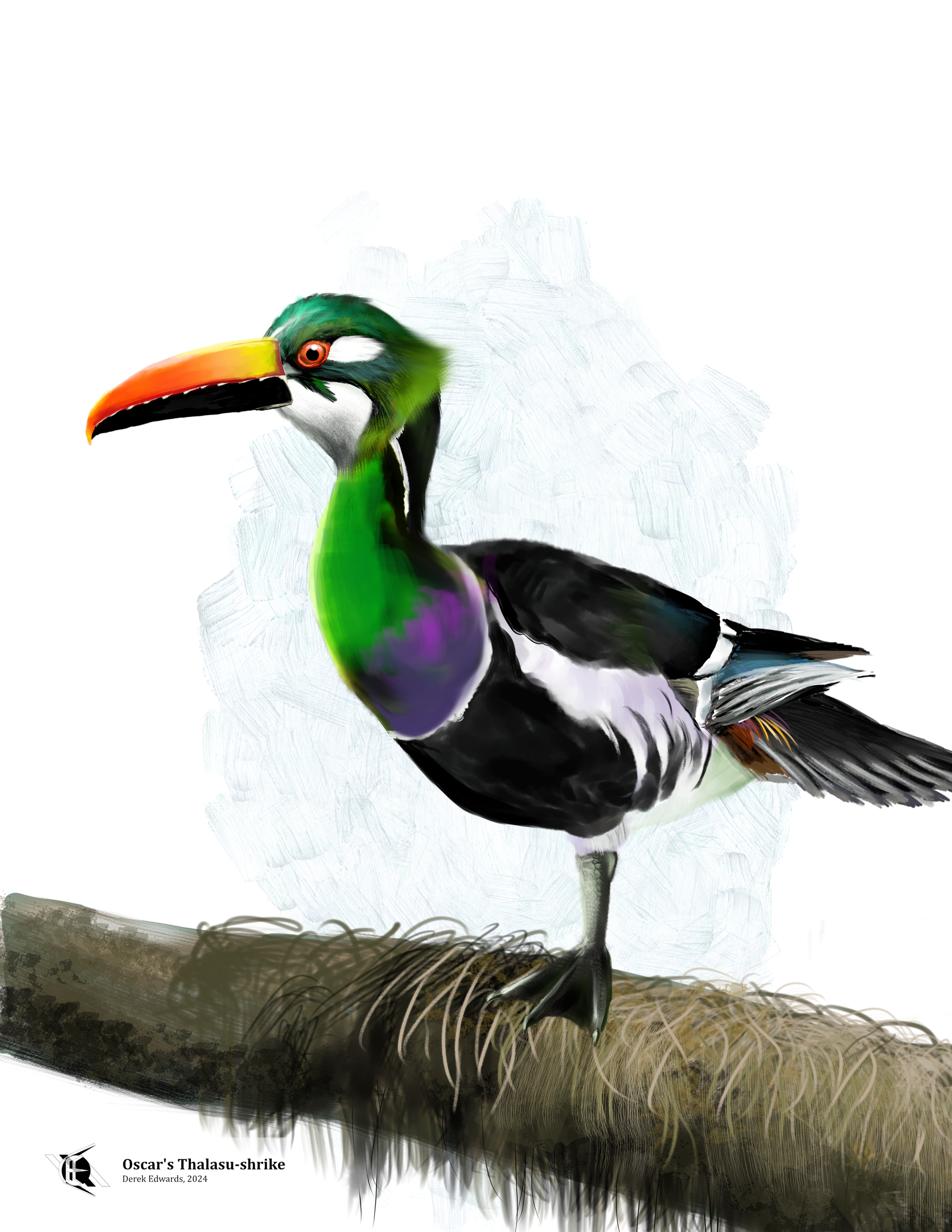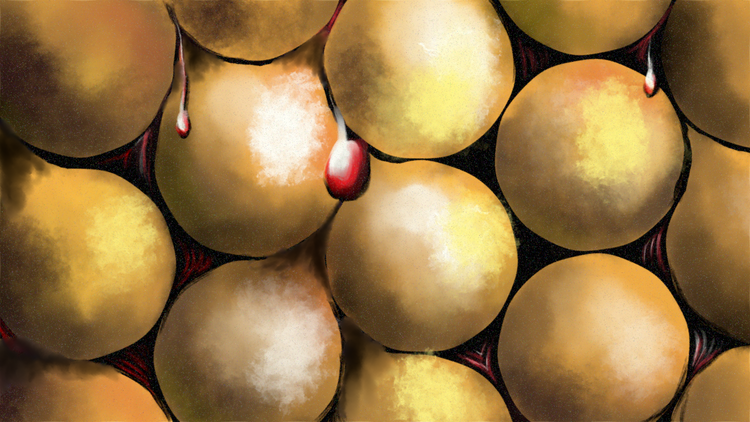
Running Commentary 4/1/2024
Hello,
I ended March how I began it, by finally sighting a nemesis bird of mine. It'll be next week's Bird of the Week, so I won't spoil which one, other than to say I've now seen every woodpecker in lower Michigan.
Anyway...
Watching...

The Bad Batch
- The mission working for Fennec was very reminiscent of the Cyd missions from earlier seasons; I think it works better because the Batch actually has a goal that they're working toward in working with her.
- The bayou planet was pretty ugly and swampy but the imagery on screen was still beautifully done, in its way. The lighting and appearance of the mins in dirty, murky water was especially well done. Also, while I enjoy a weird creative Star Wars creature, I did like how this planet just has normal crocodiles.
- Ventress arriving on Pabu indicates that the world is not as hidden and unknown as the Batch thought.
- Speaking of Ventress: we don't know (yet) how she's here when she's supposed to be dead, as shown in Dark Disciple. She mentions still having some lives left, and certainly nightsisters tend to be pretty bad at dying. I imagine this won'tbe the last we see of her in this show, and we might get some background later. (Lucasfilm has been very upfront about this retcon, with producer Jennifer Corbett saying "How she survived will be revealed in future content". Is Ventress getting her own show?) In any case, her appearance here was really well done. She comes off as very dangerous, but also very weary of her life. Her time with Omega iss not what I expected from her appearance in the show, but it was neat. I wonder if the trials she put Omega through were something Ky Narec had her do.
- According to Ventress, Omega is not exceptionally Force-sensitive, which is more-or-less in-line with what I understood about her test results. My take is that Nala Se was trying to make a Force-sensitive clone, and Omega was maybe part of that, but she was not a success. We know that creating successful Force-sensitive clones is really difficult and something Palpatine's people struggle with years later, so having a Force-sensitive clone at this early date seems off to me as an idea.
Reading...
I'm reading through some of the Star Wars books commonly mentioned as among the worst in the franchise, in an attempt to fairly judge The Crystal Star's place in the rankings for its 30th anniversary this December. This past week, I published my review of the Callista Trilogy, a trio of books introducing, then quickly sidelining, a love interest for Luke Skywalker, published during the "Bantam Era" of Star Wars. The Callista trilogy's reputation as among the worst Star Wars has to offer is grossly exaggerated, but it's not a masterpiece either. Planet of Twilight was the best entry by some margin. The story of Callista on-the-page is as tragic as her story behind-the-scenes. My full review:

I'll be looking at the Black Fleet Crisis books by Michael P. Kube-McDowell next.
Playing...
Warframe
The "Dante Unbound" update is here, bringing a new Disruption mission node, a new warframe, and a bunch of smaller updates. There's another new mission that's apparently needing an extra week of work before it goes live, so it's not out yet. I have farmed Dante; he's building at time of writing. So next week I should be able to give my thoughts on him and on the new "Deep Archimedea" mission.
This week, though, I can talk about the Inaros re-work. He wasn't awful before but his kit was clunky and his 3 particularly wasn't worth using in most cases. So how is he now?
He's pretty solid. His new 2 is a much more effective self-heal that will feel very familiar to Kullervo players: find a crowd, hit 2, heal to full. The way it groups enemies and leaves them open to ground finishers is a nice touch. His 1 is basically the same, but has better visual cueing. His armor generation with his 3 is more straightforward, certainly; hitting 3 then hitting 2 seems like the move, as it gets the armor and then gets the health back pretty quickly. His 4 is, sadly, basically a CC ability at higher levels. It's not useless, but his 2 is the better cast in most cases. My build focusses on health, ability strength, and ability range.
My build here is a non-main sort of build, without shards, so comparing this Inaros to my fully-kitted-out Kullervo isn't really fair. That said, their powers invite comparison: Inaros's 1 opens enemies to finishers, while Kullervo's 1 automatically performs a finisher, while also boosting damage. Inaros's 2 heals him and his 3 provides status immunity, but Kullervo's 2 does both at once, instantly (albeit without gathering enemies). Where Inaros has an edge is in his ability to revive himself when downed (much improved over his old sarcophagus mode) and in looks; my Inaros Prime is one of my favorite fashionframe achievements.
So, yeah, Inaros is a whole lot better. I'd pick him over a lot of 'frames in a Duviri run. But I don't know how much I'll use him in main game over Kullervo, Revenant, or Wisp.

Bird of the Week
UPDATE: This "Bird of the Week" is a fictional creature made as an April Fool's Day joke. It's scientific name roughly translates to "April Fool". The following account is similarly fictional, a parody of accounts of actual birds usually featured in this space.
Take a thalasu, a familiar sight to birders in Europe, and give it a slightly hooked beak, and you have a thalasu-shrike. As with ant-pittas and whistling-thrushes, the thalasu-shrikes are neither thalasus nor shrikes, despite their resemblance to the former. Modern genetic studies have placed them in their own order, though they seem most closely related to crakes and to tinamous.
Thalasu-shrikes are found, depending on the species, throughout the Southern hemisphere; Oscar's thalasu-shrike is found in South America from just north of Suriname to just south of Paraguay. It feeds on ants found in moss growing in the middle layer of tree limbs. They are not considered at risk of eminent extinction, nor are they very common.1
So who's Oscar? A contemporary of John Gould, the German-Scottish explorer and lay naturalist A. F. Oscar2 is not a particularly well-known figure in ornithological history. In fact, I don't get the impression that he particularly liked birds. He knew a great deal about them; he attests to being a regular reader of the German-language Journal für Ornithologie (whose obituary for Oscar I was unable to read), but he also attests to being driven nearly mad by the noise of birds in the outpost in British Guiana (now Guyana, an independent country) where he worked as a physician and the scorekeeper for the lawn-bowls league he helped found (the first such in South America). Oscar discovered the bird now named for him amidst a pile of birds he had shot in an early-morning bout of delirium induced by cacophonous birdsong. (All the more tragic, the thalasu-shrikes are famously silent birds–The Macauley library features not a single recording of any call or song they make–so this particular bird was entirely innocent of waking the hot-headed Oscar.)
To science, this bird is Aperirus moros. The specific epithet is Greek-derived refers to the dull color of its feet, which were the only useful portion of the specimen Oscar provided to Gould to be received among the initial shipment (the rest having been blown to bits by Oscar's shotgun and so intermingled with bits of other birds in the carelessly packed crate as to be indistinguishable from one another); the generic epithet is simply the Latin name for thalasu-shrikes or for buntings.3
- BirdLife International. “IUCN Red List of Threatened Species: Aperirus moros.” IUCN Red List of Threatened Species, April 1, 2021.
- Reichenheir, Wulr. “Zur Erinnerung an Aeberhard Fitzwilliamston Oscar.” Journal of Ornithology 34, no. 14 (April 1, 1886): 622–13.
- Joking, A. F. (editor). The Key to Scientific Names in Birds of the World (S. M. Billerman et al. editors), Cornell Laboratory of Ornithology, Ithaca.
Curation Links
Shine Bright Like a Diamond | Alexander von Humboldt, Lapham's Quarterly
From Humboldt’s Views of Nature. An account of phosphorescence in seawater, a phenomenon still popular in travel media. If you’ve never seen a video of water glowing blue as a swimming fish or someone’s hand runs through it, look one up, then read this nearly 200-year-old account of the same thing.
Airfoil | Bartosz Ciechanowski
Very long, very technical, and very interactive, but also worth reading, as Ciechanowski's posts tend to be. Give yourself some time to go through it, and you'll understand how airplanes fly, among other things.
Should Churches Be Beautiful? | Sharon Rose Christner, Plough
A woman of humble Mennonite background gives her thoughts on the elaborate houses of Catholic worship. “When a child makes her sister a gift, we hope she does not care more about her glitter paint or artistic skill than she cares about her sister. But if she loves her sister very much, we quietly celebrate when she uses up all her very best paints, sequins, stickers, beads, and afternoons to make something extravagant. We also celebrate when, unprompted, she scribbles something kind for her sister with half a green crayon she saved in her pocket.”
Trespass | Mirrah Foulkes, Short of the Week
[FICTION] [VIDEO] “A woman walking her dog alone in the bush has a strange encounter.” Features review written by Rob Munday. (12 minutes)
See the full archive of curations on Notion







Member Commentary